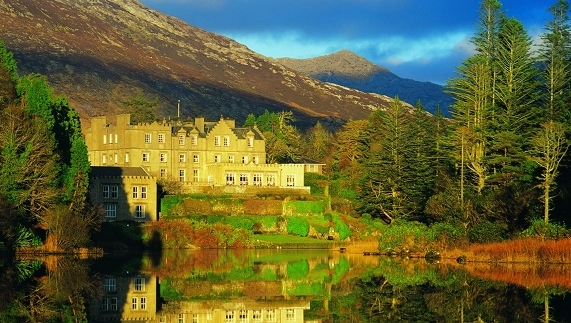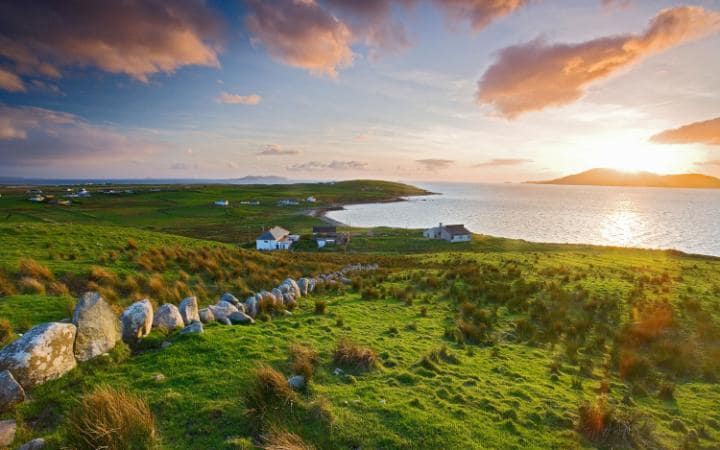
As the Delta 757 touched down on the runway at Dublin Airport, the sound of “When Irish Eyes are Smiling” filled the cabin.
The song is not new and this was an older version. And, to be perfectly honest, my travels to Ireland in the past have not always been in the best of times. There were the “troubles” and the economic downturn of past visits.
But these days, Irish eyes really are smiling as the streets in Dublin and the villages I visited are filled with locals who exude a sense of optimism and appreciation for both the present and just where Ireland seems to be headed.
I am curious about the speed with which Ireland has emerged from its potato famine historied past to its current status as one of Europe’s culinary capitals, a country where, suddenly it seems, every foodie is headed because of both technique and the availability of pristine products, free of chemicals and adulterated whatevers.
In past visits, going back thirty years, I’ve explored Dublin, Ireland’s castles, and the traffic clogged Ring of Kerry.
In 1972, trying to understand the violence, I took a train to Belfast. When I arrived I set out for the tourist office. It seemed empty and then a kindly woman came out from the back, seemingly shocked to see anyone. She was kind and concerned about my welfare and she warned me three times that “whatever you do – don’t get on any bus that says “Falls Road” on the front”.
It took me about twenty minutes to find one of the Falls Road buses and I found myself crouching down in my seat in the hope that I might avoid stray bullets. It was like sitting in a theater that slowly moved through a war zone.
But that was then and now I need to see Ireland as it is today. Step back and think about it – how many countries on this planet can you name that simply decided to take on the challenge of sectarian violence and then, successfully, set about ending it? For this alone, Ireland should be a shining example to the world. But as this trip showed, there is so much more.
The Ireland I will long remember from this trip began outside the gates of Adare Manor. We had planned this trip carefully, over the course of a year and a half. It would take our clients/friends through some of the most beautiful parts of the Irish countryside concentrating on areas off the beaten track. We would avoid cities. There were 33 of us in all seeking the “untold Irish story”.
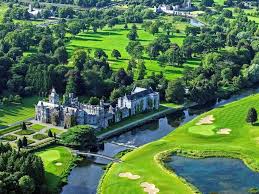
Adare Manor is a gracious estate outside the thatched roof village of Adare on the banks of the River Maigue. It is one of the very top properties in all of Great Britain and it served as the home of the Earls of Dunraven until well into the 1980’s.’It has gone through a meticulous renovation and it is, I think, the best preserved neo-gothic hotel property in the world.
We had set up a special dinner in the Carriage House the first evening and invited best-selling Irish Author Turtle Bunbury to prep us a bit on what we might encounter in our travels.
Turtle pointed out that we were in a country with a literacy rate somewhat higher than our own back home. The average income in Ireland last year was about Euro 49,000 which compares quite favorably with our own. Unemployment is “nil”, and healthcare and education are available to all.
But there is something else that Turtle said we would notice in our travels. With all of its social progress, Ireland is green, shockingly green, a deep, vibrant lush carpet green. This is a country that is still agrarian. Most of the population is, in one way or another, still involved in farming. And that is, I believe, what is so amazing about the place and so uniquely Irish. All that this great land has accomplished in the past several decades has been accomplished while the rural nature of the place has little changed.
I said that the Ireland I will remember began just outside the imposing gates of The Manor. Our wonderful guide stopped the bus and asked us to stare across the road. There were cows. But they were beautiful.
“Now look at these cows”, she said. “Look into their eyes. They are actually smiling. If you look carefully you will see that. These are happy animals living a good Irish life.”
I stared at the cows – and there was something different. The entire environment was different and it was unending. Like a chain of precious pearls, the deep green rural landscape passed movie-set perfect villages and then more cows, more perfectly manicured fields and, always, the cows smiled at us as we passed.
![C:\Users\Richard Turen\AppData\Local\Microsoft\Windows\Temporary Internet Files\Content.IE5\UZNFMRG6\570518627_e1fcd3604e_z[1].jpg](https://richardturen.com/wp-content/uploads/2023/08/c-users-richard-turen-appdata-local-microsoft-win-3.jpeg)
That first day I realized what was so unique about this place and just what it was that caused members of our group of seasoned travelers to wander back into the local village to try to pick up real estate materials. If Whole Foods were a country it would be Ireland. The entire country seems to be organic. The beef and poultry is raised outdoors and harmful additives are outlawed. The chefs have some great skills but they also have raw materials that are just hard to find in large cities within Europe.
In Ireland, the animals graze freely. There are mostly, what the Irish call “soft days”, which means a predictable light shower that bothers absolutely no one in the country. It is a small price to pay for what those soft days produce.
Along the rural roads one sees small trucks selling “Wexford Strawberries”, prized for their sweet flavors. The citizens know their whiskey and, yes, they like a Pint now and then. No one ever has to say they want a Guinness. It is understood.
But they also know their strawberries, their cheeses, and the source of almost anything they eat. The Irish still patronize the local butcher. We saw signs that read “Today’s beef is from the McNally farm” hanging in a shop. There were similar signs showing where the day’s lamb and poultry were raised. The locals would know McNally’s, and if they didn’t care for the particular taste of the family’s beef, they would likely pass and come back again to the shop in a few days. That is how specific it gets and that is just how deeply sourcing what they eat matters to the Irish.
Driving from the airport we passed a Burger King. They had a huge sign in the window proclaiming “We use only 100% Irish Beef”. They would never sell a single hamburger in this country were that not the case.
On our second day in Ireland we went to visit some residents in their home along the water in the town of Kallaloe. We ate fresh oysters and went out on a motor yacht to experience the beauty of Lough Derg. We then forged on for a tasting of local cheeses and homemade chutneys at a lovely 18th Century Georgian property. Later, we walked through a secret door to a private “Shibeen”, once an illegal drinking house on property whose purpose was to avoid the steep taxes on alcohol, We tasted award-winning craft gins and watched two talented local girls demonstrate “Sean Nos” or, old style, Irish dancing.
The trip was already having an impact by the third day. Clearly, half of us were addicted to Irish artisan Blue Cheese. We found out from the cheesemakers that one should always let choose stand out for about 24 hours before consuming. It should never be eaten out of the frig. We also heard enough “do you really eat margarine” comments to know that, once home, we would never again buy anything but Kerry Gold butter. It was that good and that different.
I’ve met some of the cows that made it – and they were, indeed, smiling.
Our route through rural Ireland would now take us to a smaller hotel property. Where Adare Manor had been perched on 840 acres of parkland and lakes, we would now have to do with a smaller place, Sheen Falls Lodge, south in County Kerry. We would be roughing it because Sheen Falls only sits on the Wild Atlantic Way set on only 300 acres. They have this antique light Green Buick open roadster that was used to take guests around the property.
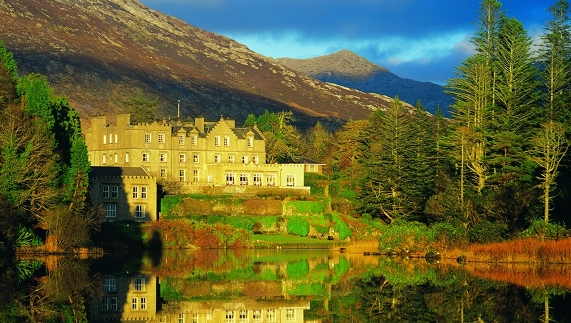
We had a barbecue set up on the lawn of a lovely cottage with grounds overlooking the water surrounded by miles of greenery on our first night. And, for the first time in four years, we were experiencing two weeks of total sunshine and none of the “soft days” we had expected.
The next day, we set out for the rather stunning and, as yet, undiscovered Beara Peninsula. This would give us a chance to take in some breath-tasking scenery no one in our group had ever seen. We would visit ancient farmlands and meet some of the most colorful characters on the Irish food scene.
We met the folks at Knockatee Cheese. Their Blue was memorable and I actually ran into one of the members of our group in a large cheese section of a gourmet grocery store the day after we returned home. He was seeking Sean’s Blue. We found something close. Knockatee doesn’t export.
At Mileens Cheese in Eyeries we met up with the Steel’s, a family thought to be at the epicenter of the Irish foodie movement. Then, we headed down the coast to meet the “All Ireland Chowder Champion” who had set up a big pot and demonstration table for us overlooking the fishing boats bobbing in the harbor of Castletownbere.
From there, we headed over to the Berehaven Lodge overlooking a series of islands. We got a quick tip on just how to make the best gin drink any of us has ever had (made with local botanticals distilled with the desalinated waters of the peninsula) and then sat on a deck where a chef from South Africa had invented a giant cooking pot to create an Irish/South Africa fusion series of tasting dishes.
As we drove from village to village and taste to taste, as we stopped at farms along the way, and walked the streets of local villages, it became clear to me that I had stumbled on a part of Ireland’s story that has not been fully reported.
For the first five days in Ireland, we never encountered a single tourist bus or, for that matter, any tourists. We never saw a policeman. Ireland off the beaten path is available and magical. The first place I will return is the lovely Beara Peninsula.
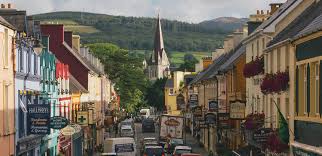
The nearest town was Kenmare. And it was there that my wife had gone missing. It was walkable from our accommodations but I did not realize she had gone to town for an early evening walk. She went to town for exercise but mostly to secure some real estate information. That has never happened on our more than 50 previous trips abroad. I had not thought she liked the chowder quite that much.
One evening we had, what had been billed as, a simple dinner scheduled at a place called No. 35 in Kenmere. It was a truly memorable meal. We had to divide up into several large tables and in the middle of dinner a farmer showed up at our table with a small, stuffed pig under his arm. He had bought the restaurant years before and decided that he wanted to give his chef some prize pork to work with, “the best available in Europe”. So he bought a small farm, found the best animals from a rare breed of saddleback, and he tended to raising the animals while his “chef does whatever it is he does with what I bring him”.
Something about that I loved. The restaurant owner concerns himself entirely with farming product for his restaurant instead of banging about in the kitchen getting in the chef’s way.
We had scheduled several “Contemplation Days” in between our planned activities. This is wise because it allows our guests to utilize all of the activities these incredible country hotels provide like falconry, hiking, archery, painting, and fishing. And it gives me time to think about what I am experiencing.
Just prior to our arrival, in an historic vote, the population overwhelmingly rejected the Catholic Church’s position on abortion, overturning the laws that outlawed it under virtually all circumstances. That was seen as a great victory for the new, younger Ireland. The voting did follow age lines. But during our travels in the country I did not get the feeling in the countryside that the young were in any majority. You would have to stay in Dublin for that.
One local historian went to pains to point out to me that in 2017 the sale of incontinence diapers outsold baby diapers in Ireland , “So we’re not all that young.”
Thirty years ago, the Irish government decided that it would create tax havens and do all possible to become Europe’s Silicon Valley. That has, of course, worked extremely well for the country and in hindsight, was a decision that would enable many future generations to live a better life than their parents could ever imagine. Apple has, of course, been the beneficiary, but so have a slew of other major US tech companies.
But there is an important byproduct of this embrace of modern technology and research. Companies like Apple and Google don’t build messy, polluting factories in Europe. They try to keep those in Asia where labor is less expensive. In Europe, the tech companies have campuses and they are good corporate citizens.
This prevents pollution.
It goes beyond that. There are not many books used in the Irish school system. Apple has taken on the responsibility of providing iPads to just about every student who needs one.
This tech-embracing country has seen some rather startling results from its initiatives. Ireland now has the highest-educated population in Europe. You can send your child to a private school for less than $6000 per year, about the same price you would pay to enroll in Ireland’s top institution of higher learning, Trinity College.
I had asked our on-site supplier, Noteworthy, to help us create an itinerary that did not exist and they succeeded far beyond any of my expectations. The result was a trip that was so perfect in so many ways that I am embarrassed writing about it because I don’t want you to think I am writing under the auspices of the Irish Tourist Board. Let me offer some of the notes I wanted to share with you to give you a sense of place.
- An Irish coffee chain wanted to one-up Starbuck’s and encourage locals to buy local. So they doubled the caffeine in all of their drinks and named themselves “Insomnia”. They are quite popular.
- Walking around the village of Bantry, one discovers four butchers serving a population of just 5,000 residents.
- We met a local who occasionally joins her son for lunch in London. It costs her $20 to make the flight on Ryan Air. Paris is just for “special dinners” as the airfare can be as high as $30.
- Any new road constructed in Ireland must have at least 1% of its construction budget set aside for roadside art work. You see sculptures and art billboards wherever you drive but advertising is tightly restricted.
- One drink can get you in some serious trouble if the police stop you so intoxication is rare. Pubs are places, I noticed, where children and strangers are always invited into conversations. They are community centers that happen to have a stellar bar and some good food. We passed a pub opened by one of the survivors of the famed Shackelton Expedition. Imagine the stories one hears there from the barkeep.
- The Healy Pass along the Beara Peninsula is a landscape that easily tops the more popular Ring of Kerry. The road twists and turns as local sheep rest on rocks along the roadside watching the machinations of the drivers attempting to scale the roadway. One turn is so challenging that no tourist bus could ever make it. The local officials have no plans to straighten out the turn.
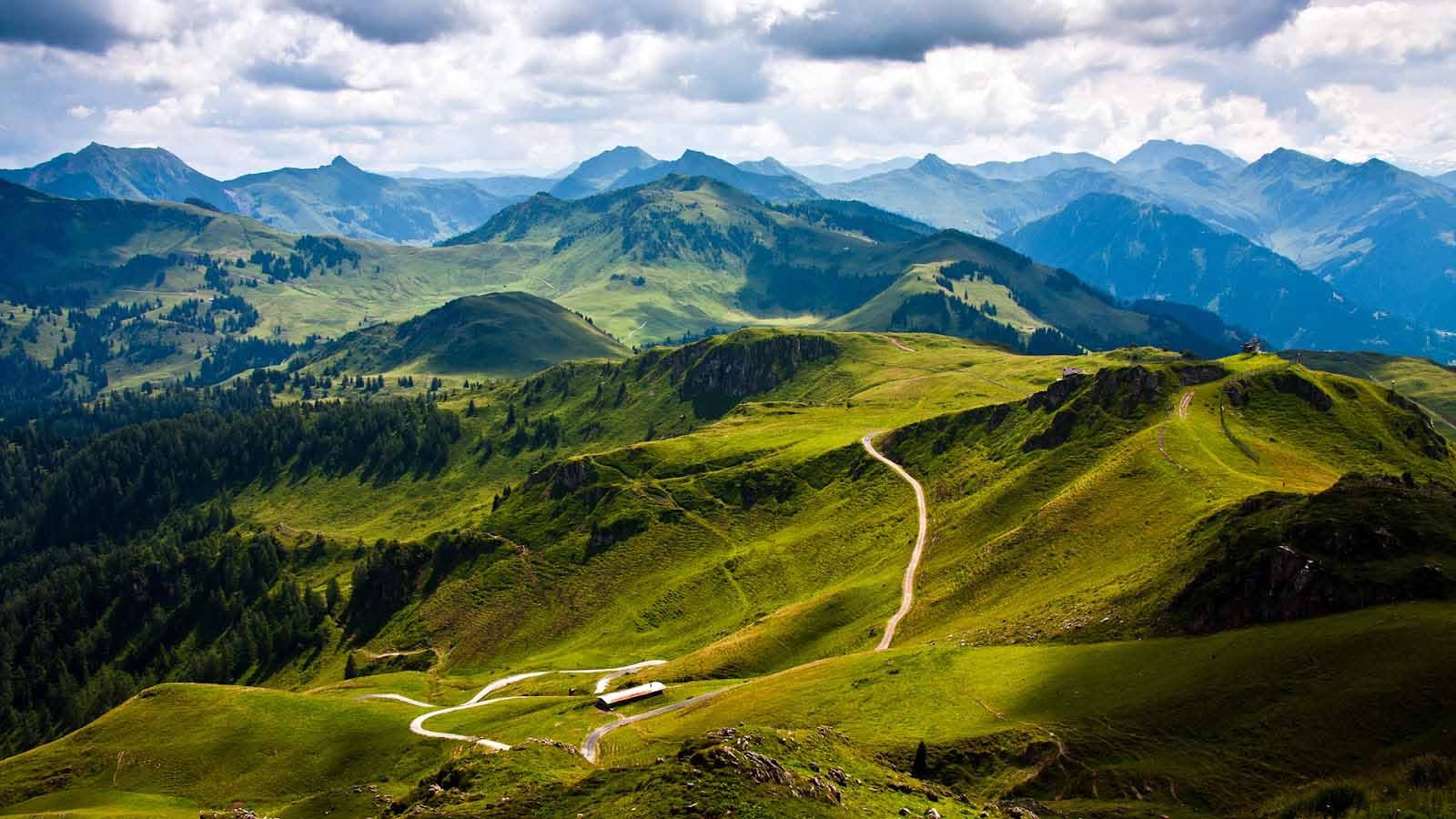
- The cows really do smile in Ireland. That may be because they are all pastured but it is also because they are not injected with an enzyme so they can tolerate corn feed as they are in the United States. You see cows are naturally allergic to corn and the Irish philosophy on that is to obey nature and just “Let It Be.”
Ireland is not really a country. It is the world’s largest organic farm-to-table community with drop-dead beautiful scenery and a population that has decided to end religious intolerance and bigotry while embracing the tech revolution. It is the one European country to embrace rural life. It is even better than the tourist posters would have us believe.
